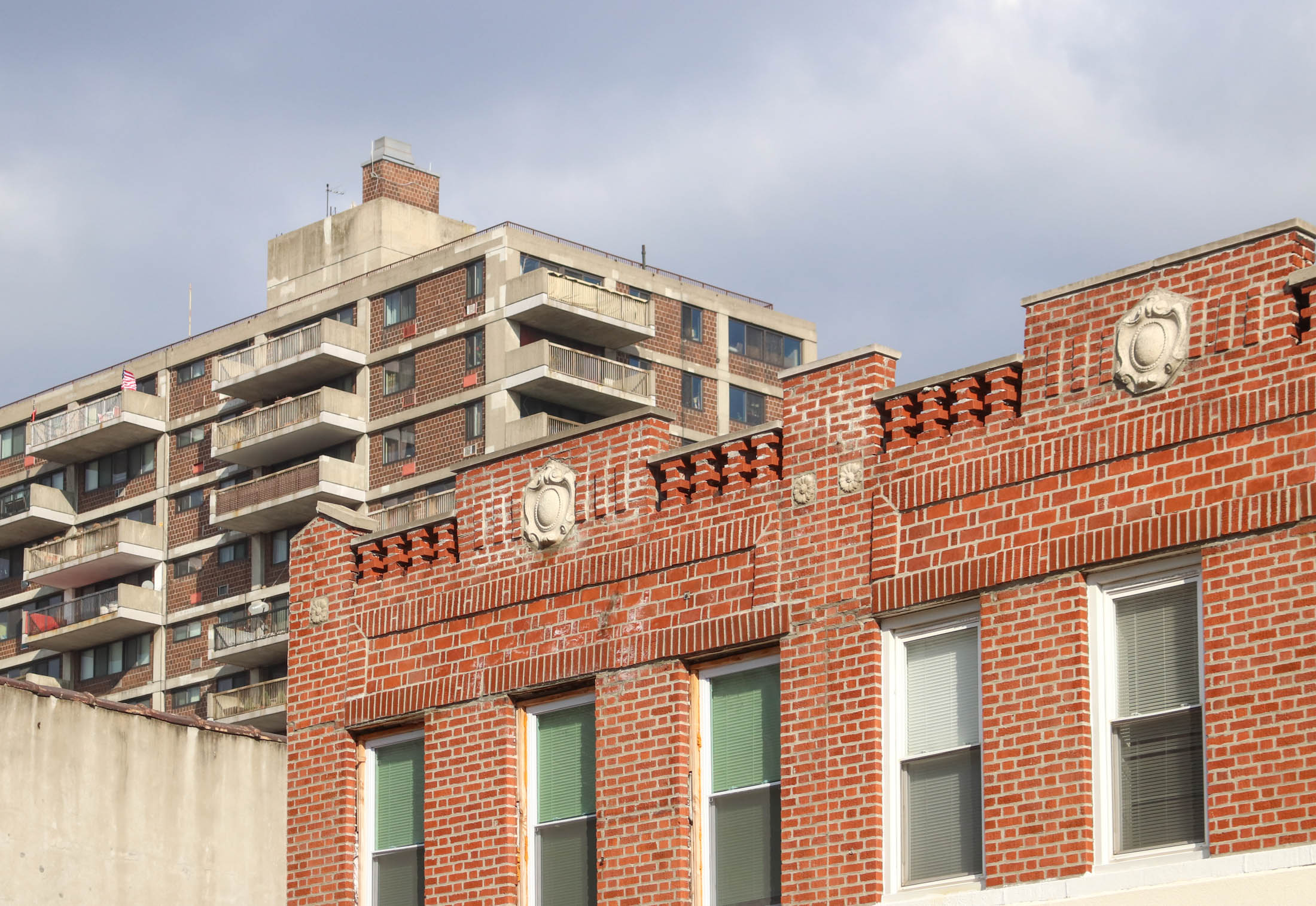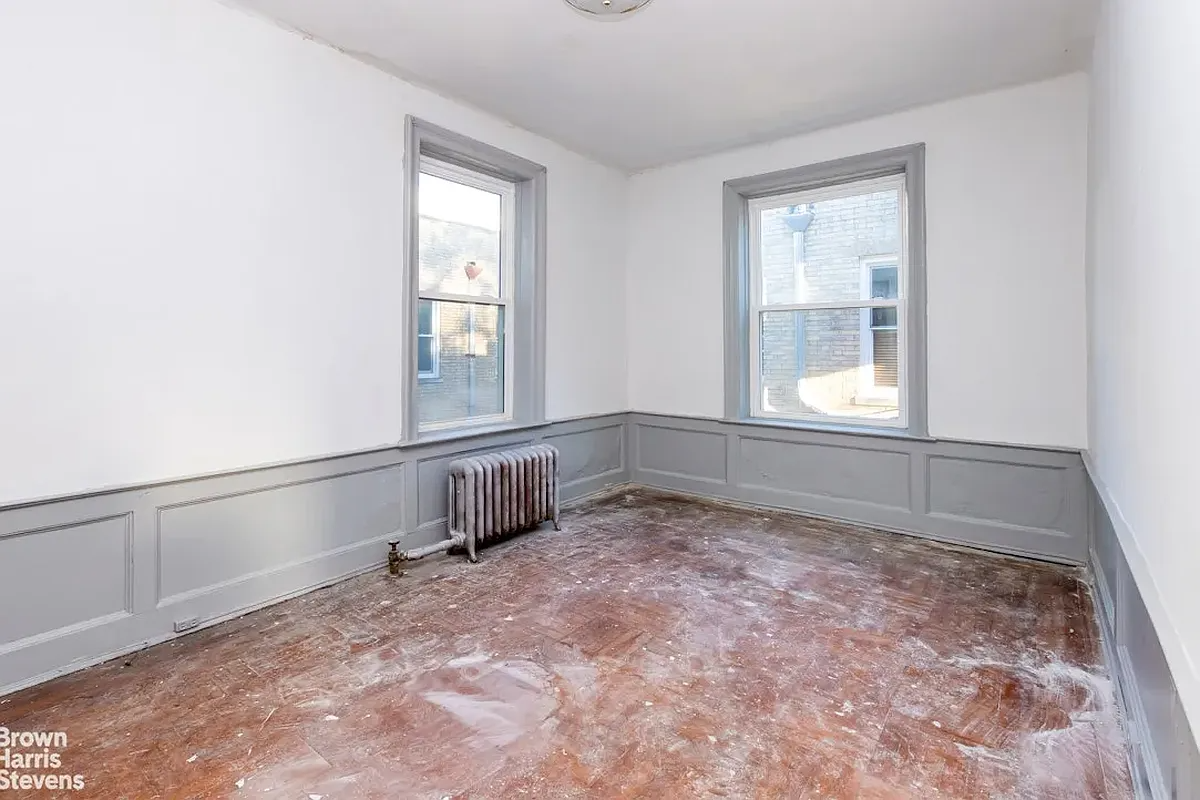Corcoran '07 Market Report: Brooklyn's Still Up
The Corcoran Group released its year-end market data today, and the brokerage’s stats show the ’07 Brooklyn market making healthy (if not huge) gains over 2006. The median sales price on all condos and co-ops was up 7 percent last year, to $590,000, while median townhouse values rose 2 percent in ’07, to $1.2 million….

 The Corcoran Group released its year-end market data today, and the brokerage’s stats show the ’07 Brooklyn market making healthy (if not huge) gains over 2006. The median sales price on all condos and co-ops was up 7 percent last year, to $590,000, while median townhouse values rose 2 percent in ’07, to $1.2 million. The really fun part of the report, however, is its breakdown of how various neighborhoods have fared, sales- and price-wise (see chart on jump). The big winner? Brooklyn Heights, where the median price shot up 19 percent, to $1.3 million. Cobble Hill/Carroll Gardens, on the other hand, showed a median price decrease of 9 percent, going from $950,000 in 2006 to $860,000 in 2007. And Park Slope’s median price slipped from $999,000 in ’06 to $928,000 in ’07. We have a few reservations about this report, including that it doesn’t specify the total number of sales it tracks, that it only compares year-over-year values, and that it basically only covers the priciest brownstone neighborhoods—though we have to give it up for the big C for devoting so much ink to Brooklyn sales data. The article in the Times this morning about the record-setting fourth-quarter Manhattan market notes that Brooklyn’s gains were more “stable” than Manhattan’s. Brooklyn showed its maturity this year because the appreciation was much more steady, said Corcoran Group president Pamela Liebman. Anyhow, do these numbers jibe with pricing trends you’ve noticed over the past year?
The Corcoran Group released its year-end market data today, and the brokerage’s stats show the ’07 Brooklyn market making healthy (if not huge) gains over 2006. The median sales price on all condos and co-ops was up 7 percent last year, to $590,000, while median townhouse values rose 2 percent in ’07, to $1.2 million. The really fun part of the report, however, is its breakdown of how various neighborhoods have fared, sales- and price-wise (see chart on jump). The big winner? Brooklyn Heights, where the median price shot up 19 percent, to $1.3 million. Cobble Hill/Carroll Gardens, on the other hand, showed a median price decrease of 9 percent, going from $950,000 in 2006 to $860,000 in 2007. And Park Slope’s median price slipped from $999,000 in ’06 to $928,000 in ’07. We have a few reservations about this report, including that it doesn’t specify the total number of sales it tracks, that it only compares year-over-year values, and that it basically only covers the priciest brownstone neighborhoods—though we have to give it up for the big C for devoting so much ink to Brooklyn sales data. The article in the Times this morning about the record-setting fourth-quarter Manhattan market notes that Brooklyn’s gains were more “stable” than Manhattan’s. Brooklyn showed its maturity this year because the appreciation was much more steady, said Corcoran Group president Pamela Liebman. Anyhow, do these numbers jibe with pricing trends you’ve noticed over the past year?
Apartment Prices in Manhattan Defy National Real Estate Slide [NY Times]
Photo by threecee.






Lou you are talking about Apples in an Orange grove – the Corcoran Article and the discussion here isn’t about rental properties – its about owner occupied housing which has been traditionally tied to personal income.
Further regarding rental properties you are ignoring the fact that cap rates are at historic lows. (similar to how P/E ratio was at record highs in 2000) Should cap rates actually return to historic norms most properties might see increasing income with declining values.
It’s not just Soho.
TWO European families have bought apartments on my Park Slope block this past year, that I know of.
One is a couple from Berlin and another is a couple and child from London.
The lowering of the dollar is only helping make New York an even more diverse and cosmopolitan city, in my opinion.
I fantasize about starting a Brooklyn Buyers Strike wherein all potential real estate buyers come together and refuse to buy until prices come down. I know this is just a fantasy.
The more the U.S. dollar loses value against the Euro, the more tourism we’ll see. We’re going to be invaded by American tourists in 2008. Europe is too expensive to justify going right now for the majority of people, even those who make decent income. And Europeans will keep coming here in droves, dear God, they’re filling the streets of Soho shopping. Soho needs a special pedestrian bridge just for New York residents to get through the crowds.
12:58, the median value in Park Slope “dropping” to $637,000 is still a rise over 2006. We sold our 2BR Park Slope coop for $570,000 in 2006. It needed some work (that we didn’t have time to do before selling) but it was on a great block on a prime street, had nice light and layout. Meaning it was at median value as a property, not lower value.
12:54 – Let’s define a couple of metrics so that we can discuss it.
1) Yield
Normally, a Yield is the return on an investment over 1 year. So, a 5% bond Yield returns $5 on a $100 Face Value Bond.
In the case of Real Estate, the Yield would be the Net Income (or Owner’s Equivelent Rent) divided by the Price.
2) P/E
Price to Earnings (P/E) is the inverse of the Yield and is used to determine a trading range of stock in certain Sectors/Industries. It is very useful in predicting future prices.
In the case of Real Estate, we would take the Purchase Price and divide it by the Net Income (really, it should be called NOI – Net Operating Income).
Both 1) and 2) are related but one is inverse of the other. Same for stocks.
The question really should be how to use it.
In stocks, you would first determine it’s Earnings growth over several years. Analysts do that for about 3 years in the future. Then, they would calculate the FORWARD P/E to see how it will adjust. The P/E ratio would decline in the future estimate UNLESS the PRICE increases so that the P/E falls into historic P/E range of the stock being analyzed. Therefore, if the Earnings (E) is increasing, then the Price must increase to remain in the historic P/E ratio values.
The same for Real Estate. If the Net Operating Income (NOI) is increasing as rents increase (or owner’s equivilent rent) in the FUTURE YEARS, then the P/E will also decrease. BUT, if you knew the P/E range of this particular Real Estate, then you know that the Price must increase inorder to keep it’s historic P/E.
When it comes to Real Estate, however, we don’t usually use P/E. We use Cap Rates which is really like the E/P (or EPS in terms of stock).
As long as people analyze their payments in term of the future, it makes a lot of sense to buy before the income goes up. Because when the income goes up, the Price MUST follow to maintain it’s current P/E (or Cap Rate in Real Estate).
When it comes to affordability, it isn’t really YOUR income to the Price of the investment that matters. It your monthly payment (including tax benefits) that matter. If you are locking in your payments via a fixed rate mortgage, then you have effectively locked in your future profits, expecting the price to go up as the rental move up.
I know it’s very confusing. Lots of people have not been versed in Future Value type calculations which is really what I have been trying to explain in terms of Real Estate.
I don’t really post on this blog much, so forgive me of posting a very convoluted post. If there are many interested in this theory, then I will point out where to get a much better explanation.
Investor Lou
1/3 at 10:46 said:
“NY is for winners work and get ahead if u can’t hack it stop complaining and move into a housing project where u belong, your probably on ssi or welfare anyway becuase your a lazy loser. Anyone with half a brain and willing to work thier asses off can make it here in nyc.”
It’s true. Talk to some of the blue collar guys you meet or the car service drivers working 2 or 3 jobs. THEY own property in NYC. Becuase they don’t sit around on the sidelines. I talked to one latino car service driver who bought 2 houses in South Slope about 7 years ago. During a time the hand-wringers would have thought South Slope was a terrible investment. Now who laughs last?
Atlantic Yards will be built on land owned by the city and leased to Ratner, with the resulting buildings sold to others. Owners of the rental buildings and the condo units will in essence be leaseholders of the State.
For this reason, no NYC government official will have any authority over the development.
Manwhile, the NYT article says:
“Median prices on two-bedroom Park Slope apartments dropped by 4 percent, to $637,000. Median prices for two-bedroom apartments in Fort Greene and Clinton Hill dropped by as much as 14 percent, to $462,000.”